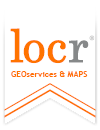Are you experiencing a shortage of paper? If so, you are not alone.
The World Print & Communication Forum reports that demand for paper – which dropped significantly during the pandemic – has rebounded to pre-pandemic levels.
However, many regions and countries – including the United States and Europe – do not have enough paper to meet this new demand. As a result, industry leaders say that printers need to prepare for price increases due to the scarcity of paper.
But even with all these shortages, marketers continue to use direct mail. Only direct mail can create the type of engagement that moves customers to the next step in the sales process.
Getting value out of direct mail
When shortages and increased costs abound, it is still possible to create cost effective direct mail.
To start, save paper by using a postcard instead of an envelope. When a postcard is personalized with an engaging image – like a personalized map – it can receive the same attention as a piece that includes an envelope.
Saving on paper costs also requires marketers to pay attention to list segmentation and reach the exact target with the right message.
For example, anyone marketing a business with a physical location needs to set geographic boundaries on their list and only target prospects located in a specific geographic boundary.
locr’s GEOanalytics enables this type of geographic segmentation. Marketers define the right geographical area for your campaign and use GEOanalytics to fence off contacts in the location most likely to act on the offer.
For example, say you are a car dealer and want to promote a sale of new cars. You know that customers will not travel more than five miles – or drive more than 20 minutes – to buy a car. GEOanalytics lets you refine your list by selecting customers that meet those exact criteria and eliminating those that don’t
Watch this video and learn more about the power or list segmentation in today’s direct mail:



